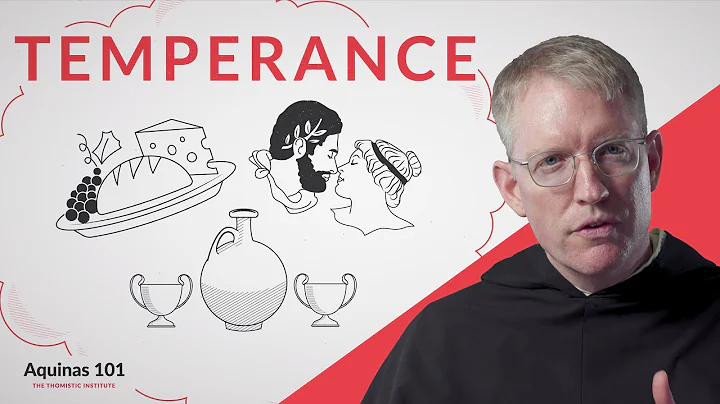The Role of War Bonds: Financing Wars and Uniting Nations
Table of Contents
- Introduction
- The Cost of Wars
- Government Borrowing and War Bonds
- The Role of Propaganda
- National Icons and Patriotism
- Demonizing the Enemy
- The Impact of Investments
- Public Demonstrations and Peer Pressure
- The Role of the Commonwealth in War Funding
- Modern Wars and Challenges of Funding
- Conclusion
The Role of War Bonds in Financing the Cost of Wars
War is an expensive endeavor, often requiring governments to seek alternative sources of funding in addition to raising taxes and introducing personal restrictions. One such method employed by governments during the First and Second World Wars was the issuance of war bonds. War bonds were a way for individual citizens to lend money to the government in support of the war effort, with the promise of repayment with interest after a specified term. In this article, we will explore the role of war bonds in financing wars, the strategies employed to encourage public investment, and the challenges faced in modern conflicts.
The Cost of Wars: Raising Funds for Exorbitant Expenses
Wars come with exorbitant costs, requiring governments to seek substantial funding to sustain their military efforts. The First World War, for example, saw tanks and aircrafts costing millions in today's currency. To cover such expenses, governments resorted to various measures, including raising taxes, introducing rationing, and borrowing heavily from other countries. However, even with these actions, additional funds were necessary.
Government Borrowing and War Bonds: Individual Support for the War Effort
War bonds became a crucial tool for governments to gather additional funds. These bonds allowed ordinary citizens to contribute by lending money to the government. With a term of six to ten years, governments could defer the massive costs of war to a later period, ideally when the conflict had reached its conclusion. However, the repayment of these bonds was contingent on the success of the nation's military campaign. If the nation emerged victorious, bondholders would receive their money back with interest. If, on the other hand, the nation faced defeat, the chances of bondholders recovering their investment were slim.
The Role of Propaganda: Inspiring Public Investment
But how did governments convince the public to invest their hard-earned money in war bonds? The answer lies in the power of propaganda. Governments used propaganda as a tool to instill patriotism and a sense of duty in their citizens. By portraying the war effort as a national endeavor, they aimed to forge a unity between the home front and the soldiers on the frontlines. Furthermore, propaganda vilified the enemy, portraying them as a threat to civilization. This fear-mongering tactic aimed to create a sense of urgency and the belief that citizens had a responsibility to contribute financially to secure victory.
National Icons and Patriotism: Eliciting Emotional Investment
To further incite public support, war bond advertising utilized national icons and symbols to evoke strong feelings of patriotism. Posters often featured symbolic figures such as Sir Lancelot, William Wallace, and Uncle Sam, appealing to the citizens' pride in their nation. By associating the act of buying war bonds with these revered figures, governments successfully tapped into the emotional investment of the public.
Demonizing the Enemy: Fear as a Motivator
Another tactic used in war bond campaigns was to demonize the enemy. By portraying the opposing forces as ghastly and barbaric, governments aimed to create a sense of dread and concern among the public. This tactic led people to view the war as a battle between civilization and barbarism, further motivating them to support the war effort through monetary contributions.
The Impact of Investments: Demonstrating the Public's Influence
Governments recognized the importance of showcasing the impact of public investments to maintain public support. Film footage and propaganda materials emphasized the direct link between the contributions made by citizens and the efforts of soldiers on the frontlines. By highlighting the role of artillery bombardments and iconic weapons such as tanks and aircraft, governments aimed to solidify the connection between public funds and military success, further motivating citizens to invest in war bonds.
Public Demonstrations and Peer Pressure: Encouraging Investment
Governments also organized public demonstrations to encourage investment in war bonds. Tanks would be paraded through towns, drawing crowds of thousands. The opportunity to witness these military weapons up close, along with the peer pressure to contribute, proved highly effective in raising funds. The success of such campaigns resulted in millions being invested in war bonds.
The Role of the Commonwealth in War Funding: The Spitfire Fund
During the Second World War, the Commonwealth countries played a significant role in war funding. The Spitfire Fund exemplified this collaboration, with entire squadrons named after Commonwealth nations. The public was encouraged to contribute by purchasing specific parts of a Spitfire, fostering a sense of personal investment. The standardized posters were adapted to express gratitude to each Commonwealth nation for their contributions, further reinforcing a sense of unity and shared responsibility.
Modern Wars and Challenges of Funding: Changing Dynamics
In contrast to the First and Second World Wars, modern wars present different challenges in terms of funding. The lack of a clear national consensus and the politicization of conflicts make it challenging to mobilize public support through traditional war bond campaigns. Furthermore, the nature of modern conflicts, often involving interventions and peacekeeping efforts, makes it difficult to convey a clear message of a fight for civilization. As a result, governments rely more on conventional taxation and borrowing methods to finance their military endeavors, sparing citizens from direct financial contributions.
Conclusion
War bonds played a vital role in financing the immense costs of the First and Second World Wars. Through persuasive propaganda, governments successfully encouraged citizens to invest in war bonds by appealing to their patriotism, fear of the enemy, and sense of duty. The impact of these investments was demonstrated through visual media and public demonstrations, further motivating the public. However, as modern conflicts differ in dynamics and societal attitudes, the traditional approach to war bond campaigns has evolved. Despite their historical significance, war bonds are no longer the primary method of funding wars, but their legacy lives on in the collective memory of those who contributed to the war efforts of the past.
Highlights
- War bonds were a method used by governments to finance wars by enlisting the support of individual citizens.
- Propaganda played a crucial role in convincing the public to invest in war bonds, tapping into patriotism and fear of the enemy.
- National icons and symbols were utilized in war bond campaigns to evoke emotional investment and foster a sense of unity.
- Demonizing the enemy was another propaganda tactic employed to motivate the public to contribute financially.
- Governments demonstrated the impact of public investments through visual media and public demonstrations, reinforcing the connection between citizen contributions and military success.
- The Commonwealth nations played a significant role in war funding, with campaigns such as the Spitfire Fund encouraging personal investment.
- Modern wars present challenges in mobilizing public support through traditional war bond campaigns due to a lack of national consensus and politicization.
- Modern conflicts are financed through conventional taxation and borrowing, sparing citizens from direct financial contributions to war efforts.
FAQ:
Q: How did governments convince citizens to invest in war bonds?
A: Governments used propaganda to instill patriotism, fear, and a sense of duty in citizens, emphasizing the national effort and vilifying the enemy.
Q: How were national icons and symbols used in war bond campaigns?
A: National figures such as Sir Lancelot, William Wallace, and Uncle Sam were featured in propaganda materials to evoke a strong sense of patriotism and emotional investment.
Q: How did governments demonstrate the impact of public investments?
A: Visual media and public demonstrations showcased the direct link between public contributions and military success, reinforcing the importance of investing in war bonds.
Q: How did modern wars change the approach to war bond campaigns?
A: Modern conflicts lack a clear national consensus, making it challenging to mobilize public support through traditional war bond campaigns. Governments rely more on conventional taxation and borrowing methods for war funding.
Q: Are war bonds still used today?
A: War bonds are no longer the primary method of financing wars in modern times. However, their historical significance remains, as they played a crucial role in financing the costs of the First and Second World Wars.
Resources:







